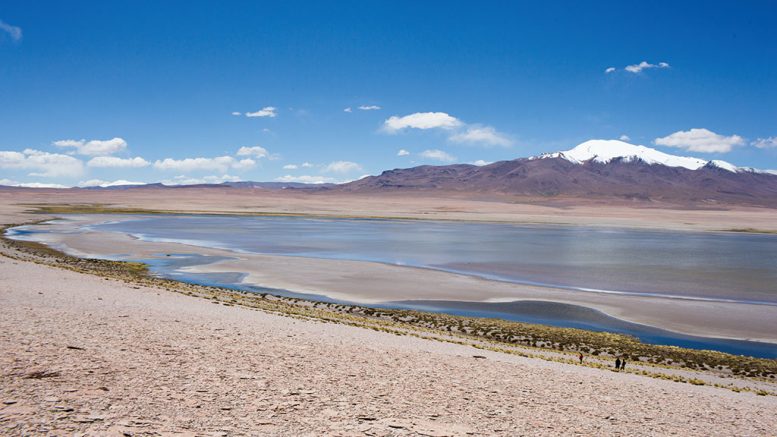Calgary-based Lithium Chile (CVE: LITH) has announced an updated resource for its Salar de Arizaro asset in Argentina that has increased overall lithium carbonate equivalent (LCE) tonnage by 81%.
With the addition of a second production well at the project, total indicated resources are now 1.3 million tonnes of LCE at a grade of 284 mg per litre. Inferred resources add 1.2 million tonnes at a grade of 310 mg per litre. The updated resource shows 1.1 million tonnes of combined indicated and inferred resources from the second well, which nearly doubles the initial resource declared early this year.
The company said in a release that the brine reservoir at the second well, located 3.6 km from the first production test well, had a greater thickness between 343 and 598 metres of depth.
Steve Cochrane, president and CEO, said that the second well gives the company “great confidence in the areal extend of the Salar de Arizaro — one of the largest in Argentina.”
The complete drill program will include four production test wells with drilling on their third production test well expected to start within a week.
If the next two test wells are successful in establishing a continuation of the brine reservoir, the resource could see a further increase as a result of filling in the area between the test wells, added Cochrane.
In November, Lithium Chile shareholder Chengze Lithium International, which still holds 19.4% of the company, was ordered by the federal government to divest its stake in the junior for national security reasons. Three other Canadian juniors with Chinese investors were also targeted in the announcement.
Second phase
Lithium Chile started the project’s second phase at Salar de Arizaro in June 2022, during which it found a potential freshwater aquifer. Freshwater is critical for producing lithium carbonate whether using direct lithium extraction or evaporation production methods.
In the summer months, the company identified over 100 metres of freshwater aquifer on the southern border of the project. They have since completed the well, installed equipment, and began testing on flow and recharge rates. Based on the data, the company submitted a water usage application to the Salta Environmental Ministry for a permit allowing the junior to use up to 75 cubic metres of freshwater per hour, a production rate sufficient to support their plans for a 15,000 tonne per year production facility.
The Salar de Arizaro project includes four exploration holes and three production wells with drilling to reach a depth of 800 metres.
Lithium Chile also announced that it was awarded “Lithium Company of the Year” at the Mines and Money London 2022, with Michelle DeCecco, vice president and CCO commenting: “2022 has been a transformational year for the company…Being recognized as ‘Lithium Company of the Year’ is foretelling to the exciting plans, and goals we have for 2023.”
The company has ownership in multiple high-grade lithium reserves in Chile and Argentina, as well as gold, silver, and copper properties.
Lithium Chile share price sits at 69¢, down 1.4% from Friday’s close, as of noon on Monday in Toronto. The stock has traded in a 52-week range of 44¢ and $1.21, and the company has a market capitalization of $135.7 million.


Be the first to comment on "Lithium Chile nearly doubles Salar de Arizaro resource"